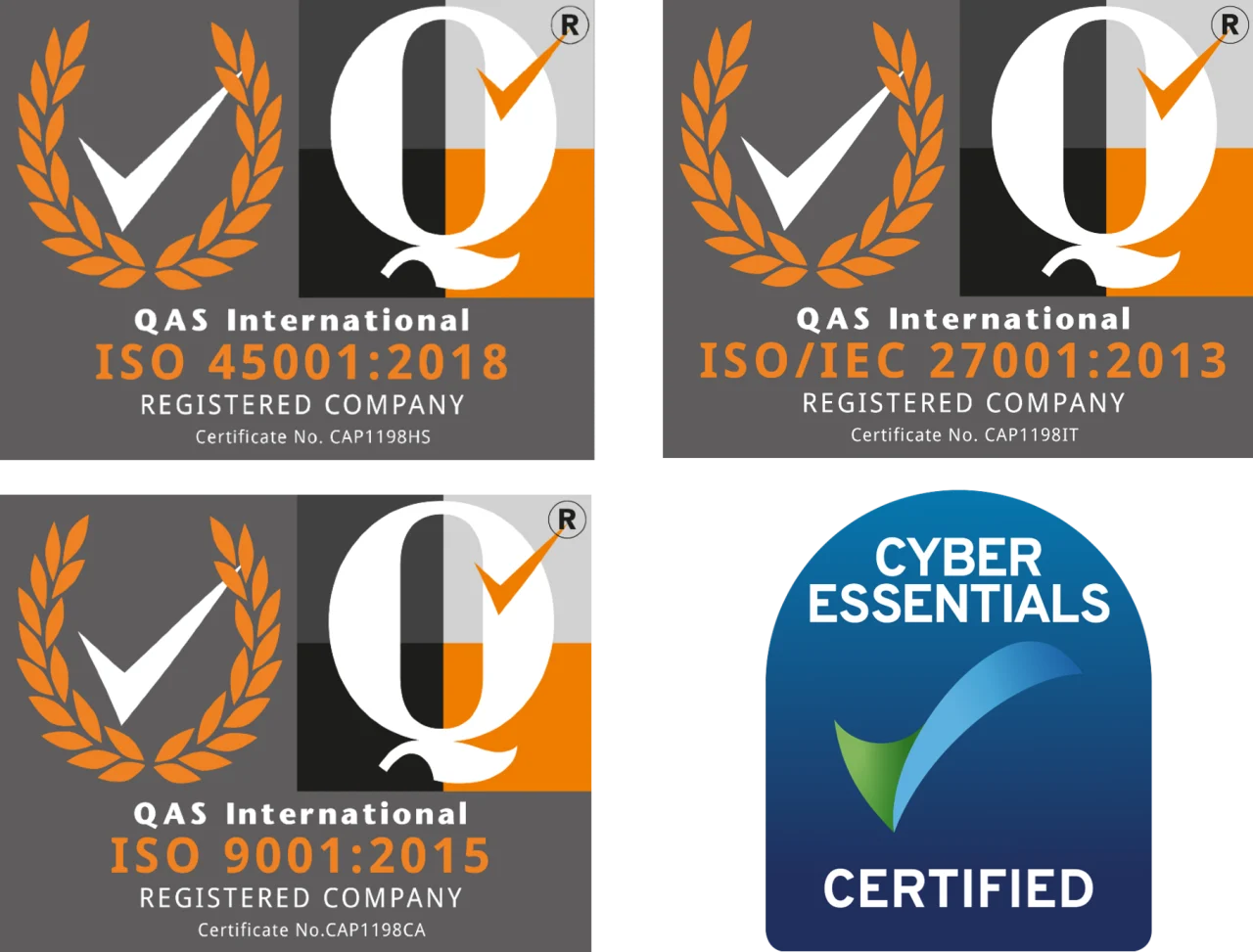What is the cost of aging IT hardware in my business? OK, so we all know that IT equipment costs money, and in a lot of cases, the IT hardware isn’t cheap when looking at the cost in isolation. However, there are many other things to consider when thinking about replacing aging IT hardware in your business. This article looks to look across the board at the impact of running old hardware in your business. The challenges associated with aging equipment include diminishing support, availability of replacement parts, and the frustration staff experience when using outdated technology. That impact can be on time, money or stress, but either way, it does have an impact. Read on to find out more about the cost of aging hardware to your business.
Are your old end-user IT devices costing you, your staff, and your customers time and money?
Old end-user IT devices can significantly impact your business’s productivity and bottom line. According to a study, employees waste an average of 20 days per year waiting for their computers to boot up or perform tasks. This translates to a substantial loss of productivity and revenue. Moreover, outdated computer hardware can lead to frustration and decreased job satisfaction among employees, ultimately affecting customer satisfaction.
Why do businesses avoid replacing hardware? What is the cost of aging IT hardware in my business?
Businesses often avoid replacing hardware due to the perceived high upfront costs. However, this approach can lead to significant hidden costs, including increased maintenance, security vulnerabilities, and decreased productivity. Aging hardware can also lead to technical debt, where the cost of maintaining outdated equipment outweighs the benefits of upgrading to new hardware.
Are your old end-user IT devices costing you, your staff and your customers time and money?
You might not have thought about it in this context before, but organisations and their staff waste countless hours waiting for their IT equipment to start-up, even when there are no issues with it. Considering a hardware upgrade is crucial to avoid hidden costs and productivity losses associated with maintaining outdated hardware. When you start to consider the impact of older devices, the cost becomes clearer and much starker. On average, businesses waste around 20 days per year, per employee waiting for IT equipment to boot or perform the task they have asked it to complete. The average UK salary has now reached over £30,000 per year. If you break this down, on average the cost of this wasted time would work out to be over £2000 per employee per year. When you factor in that a standard PC or Laptop, inclusive of the relevant licensing and labour/installation costs, is likely to cost less than £1000, it really starts to make you think.

Why do businesses avoid replacing hardware? What is the cost of aging IT hardware in my business?
It’s not really an easy question to answer, but we can maybe conclude that capital expenditure is properly considered by the relevant people in most organisations and businesses and are therefore looked at as an avoidable cost. Whereas staff costs are regarded as unavoidable and therefore less considered as the person is always in the business. However, what is the price of the frustrated employee?
If an employee feels frustrated because their equipment is usually not working particularly well or is regularly running slowly, will it cause them to have other frustrations and feelings of discontent? Might they even leave your business? If that were to happen, then you have to now factor in the cost of hiring a new employee to replace them – what are the staff costs of doing that and the recruitment costs associated? £5000, £10000? Suddenly, the cost of slow, old, outdated IT equipment becomes way less significant when you look at it in context, doesn’t it?!
Upgrading to new hardware can provide new features that enhance functionality and security, making it easier to maintain compatibility and protect against vulnerabilities.
If you add to the mix the cost of repairing old equipment when it goes wrong, then the decision to keep the kit in the first place can seem increasingly difficult.
What are the security vulnerabilities and risks of NOT replacing our IT Kit before it’s slow?
The obvious one is wasted time, as above, it becomes more and more costly to keep the kit in the business. At the point where you do decide to replace the kit, if it’s working correctly, it can be planned really well with little downtime. However, if it breaks down, you could be without kit for a number of days or weeks, depending on what it is that you need to replace.
How about security? IT Security is a complex beast. Bad actors are able to attack systems in all different ways. The older your kit, the more time the bad actors have had to find a way to hack it. It may sound like we are simplifying this, that’s because we are, but it is a definite risk to your business.
Keeping your operating system up to date is crucial to maintaining security and functionality. Aging computers may no longer support the latest applications or receive updates, making them vulnerable to security threats and compatibility issues.
Is there a compatibility risk? Yes, of course, if you don’t replace your hardware before the latest and greatest software is released, guess what? It might not be supported. When Microsoft release new versions of Windows or Office, they usually plan for the equipment to be ‘backwards compatible’ to a certain extent, but there’s only so far they can go and so hardware that is too old, simply won’t work with the newer versions of software.

Security Threats
Aging hardware poses significant security threats to businesses. Outdated operating systems and software can leave your business vulnerable to cyber attacks, data breaches, and malware. Moreover, older equipment may not be compatible with the latest security patches and updates, making it difficult to protect your business from emerging threats.
Technical Debt and Productivity Losses
Technical debt refers to the cost of maintaining outdated equipment, including the time and resources spent on repairs, maintenance, and troubleshooting. This can lead to significant productivity losses, as employees spend more time dealing with technical issues rather than focusing on core business activities. Moreover, aging hardware can lead to decreased employee morale and job satisfaction, ultimately affecting customer satisfaction and revenue.
What are the hidden costs of maintaining aging hardware?
Maintaining aging hardware can lead to significant hidden costs, including increased maintenance, security vulnerabilities, and decreased productivity. These costs can add up quickly, making it more cost-effective to upgrade to new hardware.
Hidden Costs and Budget Concerns
Businesses often overlook the hidden costs of maintaining aging hardware, including the cost of replacement parts, technical support, and downtime. These costs can be substantial, and can quickly add up to exceed the cost of upgrading to new hardware. Moreover, aging hardware can lead to budget concerns, as businesses struggle to allocate resources to maintain outdated equipment.
OK, so what’s the best practice when it comes to a hardware upgrade?
Let’s start by connecting the IT equipment to your business’s main KPI, its accounts. IT equipment is usually ‘depreciated’ in value by your accountant over a period of 4 years. That’s a clear indicator that it’s no longer worth anything to your business. You could say it no longer “owes you anything”, in other words! Or, you’ve had the best out of it and it’s now time to replace it.
If you consider IT equipment being replaceable every four years, then you start to be able to develop a roadmap. This roadmap can contain both improvements and budgeting. Roadmaps allow you to discuss with your Finance team at a different level. For example, what the spend needs to be for IT, in each year over the four years that are coming. This gives an excellent amount of stability and consistency to your spending. That’s because you are planning in advance of the actual spend. One of the big problems with IT expenditure is the unpredictable nature of it. However, if we can plan in advance, it becomes far less unpredictable.
What if we can’t afford to replace the kit?
That’s a tricky question and one that can’t be answered very easily. However, there are many different ways to help you with the affordability question. Not least is equipment leasing, read our article on IT Equipment Leasing here.
Summary – What is the cost of aging IT hardware in my business?
On the face of it, replacing IT hardware might seem scary, but the scarier thing is to NOT replace it. Try to find a way to budget for IT in a proper fashion. Aim to replace 25% of your kit every year and get onto a rolling plan of doing just that. If you do, we can guarantee that your IT Systems will be in a far better place in 4 years!
If you have any queries about how replacing hardware in your organisation or would like to discuss your needs with regard leasing IT equipment, or IT Support please don’t hesitate to get in touch using our Contact page.

